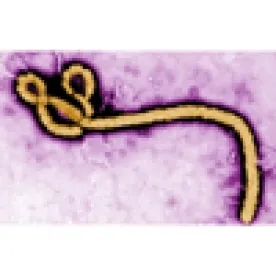This week, the U.S. Centers for Disease Control (“CDC”) reported that the outbreak of Ebola in Nigeria could be coming to an end, with no new Ebola cases since August 31, and the last patient under surveillance released on September 23. In light of this positive development, the CDC has reduced its travel alert for Nigeria from a Level 2 alert to a Level 1 alert, and the World Health Organization has stated that if there are no further cases, Nigeria will be declared Ebola-free on October 20th.
Nigeria’s success in preventing the spread of Ebola has garnered the attention of health authorities in the U.S. and Spain, who are now grappling with the first cases of Ebola in those countries. Indeed, Nigeria’s containment of Ebola is being seen as a model, particularly in light of the challenging circumstances in which Ebola was introduced into the country. Nigeria’s “Patient Zero” was already contagious and dying when his flight arrived in Lagos — Nigeria’s most populous city and a major transportation hub. In contrast, the Ebola patient in the U.S. was not symptomatic until after he arrived in the United States from Liberia, which significantly reduced the number of people was in contact with while contagious.
So what did Nigeria do right? A number of things, sources say.
-
Effective contact tracing. Upon identifying its first case of the virus, Nigerian health officials quickly issued notifications and began tracking down every person who may have had contact with Patient Zero, including the 72 other passengers on his flight into Lagos. Nigerian officials developed a list of 281 people from this single patient, and every one of those individuals was required to provide twice-a-day updates to health officials about their well-being. In the end, trained contact tracers conducted 18,500 face-to-face visits to assess potential symptoms.
-
Establishment of a centralized incident management and response center. Drawing on resources established to fight polio, Nigeria established an Ebola Incident Management Center to handle the potential outbreak, and developed a staffing plan and outreach strategy to reach more than more than 26,000 households of people living around the contacts of Ebola patients. In addition, Nigeria reassigned 40 doctors trained in epidemiology from its polio response team to the Ebola center.
-
Community involvement. Nigeria took a “whole community” approach to the problem, engaging community leaders and military officials to discuss the response to the virus.
-
De-stigmatization. Finally, Nigeria encouraged people to be forthcoming about their contacts and the status of their health, engaging in a campaign to make people feel like they were doing something good for their country by being honest and reporting to health officals. As one person who helped with the Ebola response in Nigeria put it, Nigerian officials sent a message to “really make them look like heroes.”
The CDC has now sent personnel to study Nigeria’s Ebola containment strategy, noting that “[Nigeria’s] extensive response to a single case of Ebola shows that control is possible with rapid, focused interventions.”



 />i
/>i

